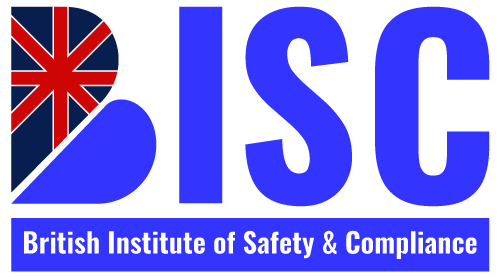Confined Space Safety: What Every Supervisor Must Know
📌 Introduction
Confined spaces are among the most dangerous work environments, responsible for numerous injuries and fatalities each year. These spaces — such as tanks, tunnels, silos, and pipelines — are not designed for continuous occupancy and can quickly become life-threatening.
If you’re a supervisor or safety professional, your role in planning, monitoring, and ensuring confined space safety is critical. One mistake can cost lives.
In this post, BISC (British Institute of Safety & Compliance – UK) outlines everything supervisors must know to manage confined space operations safely and legally in 2025.
🚨 What is a Confined Space?
According to HSE UK, a confined space is any enclosed area that:
Has limited openings for entry and exit
Is not intended for continuous occupancy
Has the potential to contain hazardous substances or unsafe conditions
Examples include:
Storage tanks
Underground sewers
Ductwork
Boilers
Subsurface vaults
Silos and containers
🎯 Why Supervisor Competency is Critical
As a supervisor, you’re not just overseeing workers — you are:
Approving and reviewing entry permits
Assessing and controlling hazards
Ensuring monitoring equipment is functional
Coordinating emergency response plans
Verifying PPE, ventilation, and atmospheric testing protocols
Any lapse in procedure or understanding can lead to suffocation, explosions, toxic exposure, or entrapment.
🛠️ Key Responsibilities of a Confined Space Supervisor
✅ 1. Hazard Identification
Supervisors must assess for:
Oxygen deficiency/enrichment
Flammable gases or vapours
Toxic substances (e.g., H₂S, CO)
Engulfment hazards (liquids, loose materials)
Temperature extremes and poor lighting
BISC training provides scenario-based guidance on identifying both obvious and hidden hazards.
✅ 2. Issuing and Managing Entry Permits
Supervisors must:
Approve Permit to Work (PTW) systems
Specify entry times, roles, and PPE required
Ensure all safety measures are in place before authorising work
Close the permit immediately after work or in emergencies
✅ 3. Atmospheric Testing Oversight
Regular gas testing is mandatory. You must:
Use calibrated gas detectors
Monitor oxygen levels, flammables, and toxics
Conduct pre-entry and continuous monitoring
Take corrective action if levels exceed safe limits
✅ 4. Emergency Rescue Preparedness
Every confined space job must have:
A written rescue plan
Trained rescue personnel on standby
Communication systems (e.g., radios, alarms)
First aid equipment and breathing apparatus available
BISC courses include emergency drills and supervisor-level response planning.
✅ 5. Training & Briefing Teams
You must confirm that all workers:
Are trained in confined space entry
Understand hazards and emergency procedures
Can properly wear and use PPE
Are medically fit for the task
Supervisors should also conduct toolbox talks before each entry.
🎓 Get Certified: BISC Confined Space Safety Training
Ensure you’re legally compliant and technically competent by enrolling in:
✅ Confined Space Safety Training – Supervisor Level
Certified by: BISC (British Institute of Safety & Compliance – UK)
Based on HSE UK & BSI Safety Standards
Covers atmospheric testing, PTW, PPE, rescue plans
Includes live instructor-led sessions (Online or Onsite)
Digital Certificate with QR Code & Global Recognition
Suitable for roles in construction, oil & gas, utilities, and marine sectors
🌍 Where This Certification Is Recognised
✅ United Kingdom (UK)
✅ Saudi Arabia
✅ United Arab Emirates (UAE)
✅ Qatar, Oman, Bahrain
✅ Africa, India, Bangladesh
✅ Offshore and shipyard projects globally
📞 Final Words: Safety is Leadership
If you’re supervising confined space work, your decisions directly impact lives. Proper training is not just a legal requirement — it’s a professional obligation.
Don’t take shortcuts. Get certified. Lead safely.
